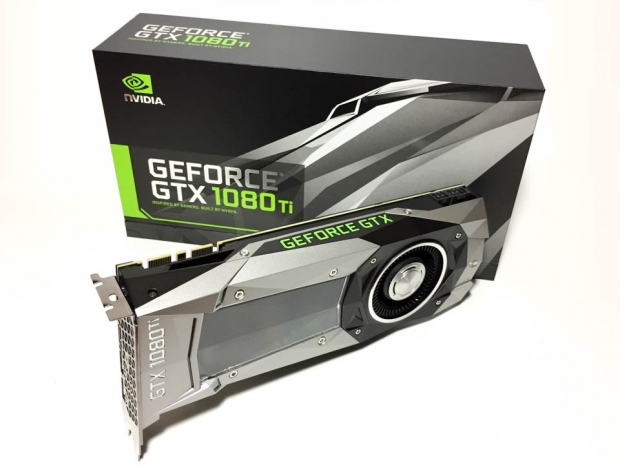Index
- Nvidia Geforce GTX 1080 Ti review
- GPU and memory overview
- Specifications, packaging and hardware overview
- Test Setup
- Results – Nvidia Vulkan API demo
- Results – Cinebench R15
- Results – Civilization VI
- Results – Just Cause 3
- Results – No Man's Sky
- Results – Far Cry 4
- Results – 3DMark + Time Spy
- Results – Unigine Heaven 4.0 Benchmark
- Overclocking
- Conclusion
- All Pages
Conclusion – The most advanced consumer GPU gets over a 40 percent price cut
Nvidia has been able to give developers a remarkable tool for maintaining GPU-accelerated workflows and developing applications since CUDA was first released back in 2007. From Fermi to Pascal, consumers have witnessed about a fivefold increase in frames per-second performance with a single card in modern PC games. Now that the advent of 4K gaming has been building for the past two years, it only seemed appropriate to be able to release a high-performance Geforce product at a lower barrier to entry for those requiring the most demanding amounts of pixel and texel fill rates to their displays.
Two years ago, the Maxwell-based Titan X basically became a niche product for hardcore enthusiasts who were curious to even meet the basic memory demands of 4K and higher resolutions, and aside from developers, these customers were few and far in between. Today’s introduction of the Geforce GTX 1080 Ti at a price point of $699, along with the GTX 1080’s price reduction to $499, will ensure that more middle-income folk will be able to experience the latest generation of “The Way It’s Meant to be Played” at considerably higher resolutions without being limited by larger framebuffer requirements.
In the race up to HBM memory for consumer graphics, which often comes at a very high price, Nvidia has been able to provide a more highly efficient alternative in the form of second-generation GDDR5X that uses “tiled caching” to improve communication across multiple caches and reduce memory traffic. With the GTX 1080 Ti, the benefit is a 2.25 increase in memory bandwidth over HBM2, and an additional 30 percent on top of this by combining color compression techniques with tiled caching.
Last year with TSMCs 16nm process, it became cheaper to manufacture the GP104 powering the GTX 1080 than the GM200 that powered the Maxwell-based Geforce GTX 980 Ti and Geforce GTX Titan X. With improvements from a redesigned GDDR5X memory architecture, along with further adjustments to power, temperature and voltage (PVT) loss, Nvidia can now deliver a card that is not only more cost-efficient it to produce, but more power-friendly for the consumer to run in their PCs at home.
Now that the Geforce GTX 1080 Ti has surpassed the Titan X Pascal in price, benchmarks and compute performance, it is possible that the company will announce a second revision during GTC at a lower price point, albeit using a fully-enabled P100 with 60 SMs (3,840 cores) versus the current 56 SMs and 3,584 cores.
Necessary for 3840x2160p above typical monitor refresh rates
For gamers who want the absolute best in class performance without sacrificing quality, framerates or spending more on a graphics card than on the rest of the PC, the Geforce GTX 1080 Ti is capable of providing an average of 65 to 70fps in some of the most demanding titles at Ultra HD resolutions. In Just Cause 3 at 3840x2160p resolution, we are talking about the difference between 67.4fps on the GTX 1080 Ti and 49fps with the standard GTX 1080. In No Man’s Sky at the same resolution, the difference is 69.4fps versus 45.2fps with the GTX 1080. In synthetic benchmarks like Unigine Heaven, the difference between the Geforce GTX 1080 Ti and the standard GTX 1080 can be as much as 51.9fps versus 34.8fps. For these users, there are some much-needed performance gains for those with higher pixel counts. Take advantage of the pricing Nvidia is offering before a new Titan series card is announced, or wait for the competition to announce the full range of details on its upcoming Vega series lineup, the choice is yours.




